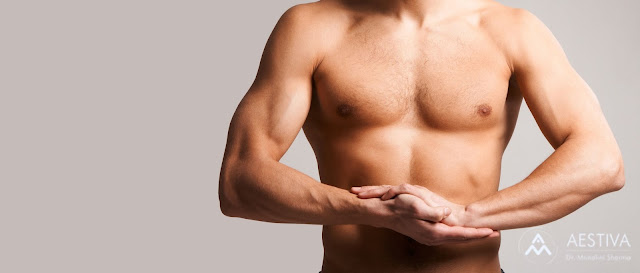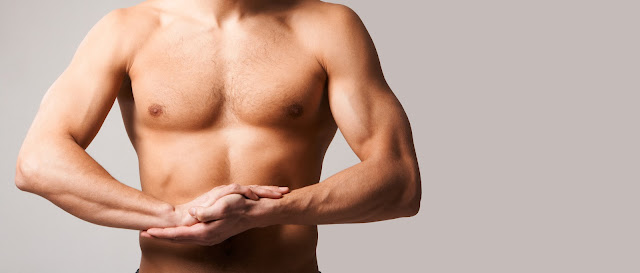Causes and Treatment for Pubertal Gynecomastia
Gynecomastia is a condition where male breast glandular tissue enlarges, causing discomfort or increased sensitivity in the nipples. It primarily results from an imbalance in hormones and can occur in childhood, adolescence, or middle to late life. It is important to distinguish between gynecomastia and the breast enlargement caused by fat accumulation that occurs in overweight men. Although treatments are available for severe or chronic cases, the disease usually resolves on its own. When a boy enters early puberty, he often has the appearance of some breast tissue. There are times when the amount of tissue seems too much and can be painful or tender.
In this blog, we will explore the causes and treatment of pubertal gynecomastia. To make this post enriching, we have gathered insights from Dr. Mrinalini Sharma, a renowned gynecomastia surgeon in Delhi. Continue reading to learn.
Why Does Pubertal Gynecomastia Occur?
Gynecomastia is caused by a relative imbalance between the hormones testosterone, found in men, and estrogen, found in women. Estrogen is regarded as a feminine hormone, but it is necessary for men to develop healthy bones. Testosterone is normally changed into estrogen in women and, to a lesser degree, in men. An imbalance between testosterone and estrogen develops during specific life stages, namely early to mid-puberty and old age, when this shift to estrogen is comparatively more pronounced. Breast enlargement may happen when the very small amount of breast tissue that boys typically have is exposed to rising estrogen levels, which are typical during early puberty. Gynecomastia is more common in overweight boys because male hormones can be converted into female hormones in fat tissue. Furthermore, because obese boys may accumulate fatty tissue in their breasts or chests, these two tissues may appear identical.
Certain uncommon medical conditions sometimes bring on Gynecomastia. Breast development and excess estrogen production can result from tumours of the adrenal or testicles, pituitary, or adrenal disorders. If gynecomastia appears or the boy's testes do not enlarge as he enters puberty, it may be a sign of Klinefelter syndrome, a genetic disorder that affects testicular function.
Some prescription drugs, over-the-counter supplements, and illicit drugs can bring on Gynecomastia. The most often prescribed drugs are those for treating ulcers and those recommended by psychiatrists. Breast development can also be brought on by over-the-counter supplements and topical medications, particularly those that contain oils like lavender, tea tree, or other oils that may act similarly to estrogen. Also, gynecomastia can occasionally result from the use of alcohol, anabolic steroids, and drugs of abuse like heroin, amphetamines, and marijuana.
How Can Pubertal Gynecomastia Be Treated?
Pubertal gynecomastia usually goes away on its own when there is not an excessive amount of breast tissue. Cosmetic surgery may be the only option if a boy feels so self-conscious about his appearance due to an abundance of breast tissue or breast and fat tissue combined.
An additional tactic, which can occasionally be useful, is to wear a compression, or special elastic, tank top to prevent the breasts from drooping and to enhance the appearance of the chest.
Lastly, there are presently no approved drugs for this purpose, despite numerous trials of drugs to reduce estrogen production or block its effects on breast tissue. These drugs can be helpful occasionally, primarily if there is more breast tissue than fat and if the breast tissue has not been present for a number of years.
Does Gynecomastia Eesult from Obesity?
Dr. Mrinalini Sharma, a well-known male breast reduction surgeon in Delhi, says that gynecomastia does not result from obesity. Overweight or obese children may develop chest fat, but this is not the cause of gynecomastia.
We refer to this excess fat as pseudo gynecomastia (or fake gynecomastia). This type of gynecomastia or pseudo gynecomastia may be the cause of the extra tissue, depending on an examination performed by the medical professional. Gynecomastia can affect one or both breasts and occasionally feels like a tiny, firm, rubbery lump under the nipple. Pseudogynecomastia, on the other hand, feels squishy and soft.
Conclusion
Up to 70% of males experience gynecomastia in the early to mid-puberty stages due to the normal hormonal changes that happen during puberty. If a man or boy has swollen or sensitive breasts, the doctor will first examine them to determine whether the tissue in their breasts is fatty or glandular.
If one is wondering how much gynecomastia cost in Delhi, one may visit Aestiva Clinic. The clinic offers affordable gynecomastia surgery ranging from Rs. 50,000 to Rs. 90,000. For a thorough consultation, visit the Aestiva Clinic today to consult Dr. Mrinalini Sharma.



Comments
Post a Comment